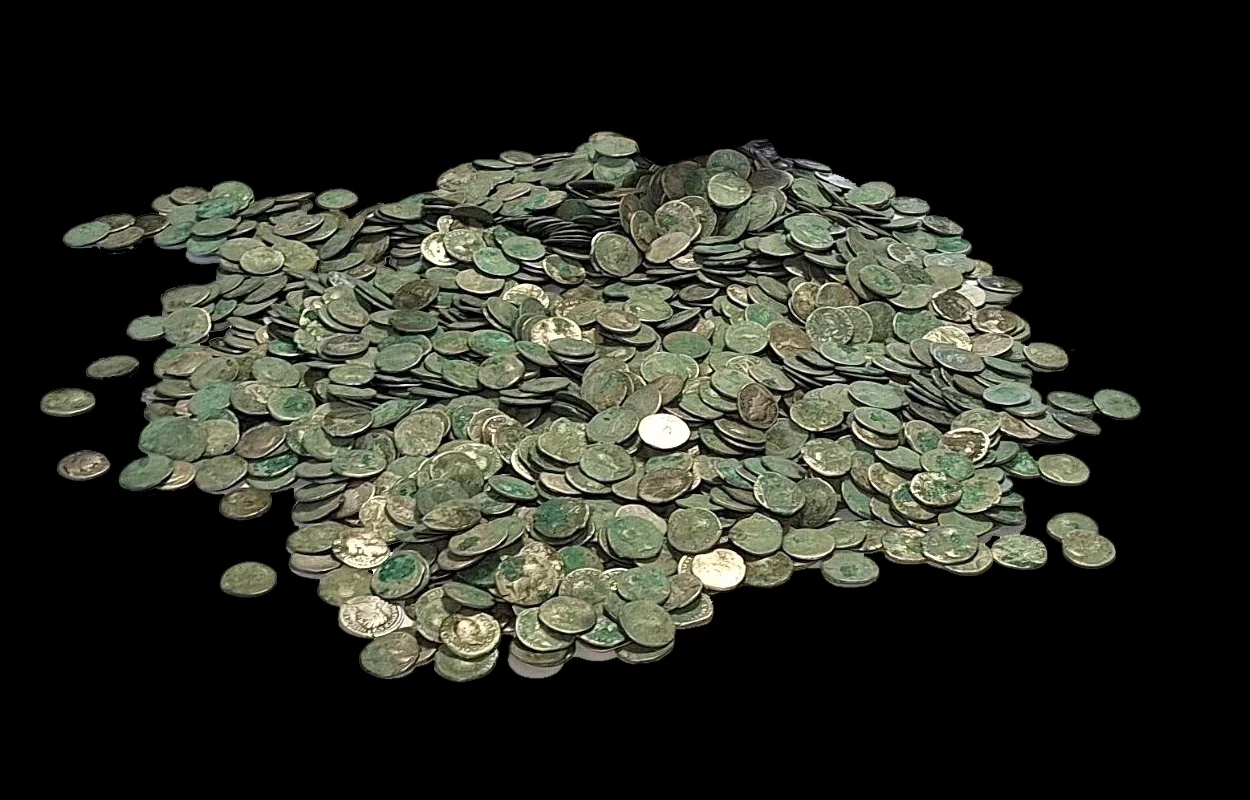A metal detectorist has unearthed a giant coin hoard from the Roman period near the village of Letţa Veche in southern Romania.
The discovery was made by Bebe Mangeac while surveying a field, when a strong signal from his metal detector led him to a vast trove of Roman-era silver coins.
Mr Mangeac contacted local authorities at the Letţa Veche City Hall, where police attended the transfer of the hoard and recorded the location of the discovery site to secure for further archaeological investigations.
The hoard contains a total of 1,469 silver denarii dating from the Imperial Period – spanning from the reign of Nero in AD 54 to Marcus Aurelius in AD 161.
According to experts, the hoard ranks among the largest discovered in Romania from the Roman period and likely represents the personal cache or life savings of an individual that was accumulated over a long period.
Ceramic shards found at the discovery site indicates that the hoard was originally placed in a vessel container and then intentionally deposited, or that the vessel was deliberately broken in a protective ritual before burial.
The coin hoard has now been inventoried and will be transferred to the County Directorate for Culture. From there, it will be assessed and prepared for permanent housing at the Teohari Antonescu County Museum in Giurgiu.
Under Romanian law, once the hoard’s value has been estimated, Mr Mangeac will be legally entitled to a reward of up to 45% of the assessed value, which in this case is expected to be substantial.
Header Image Credit : Jam Press
Sources : Jam Press





